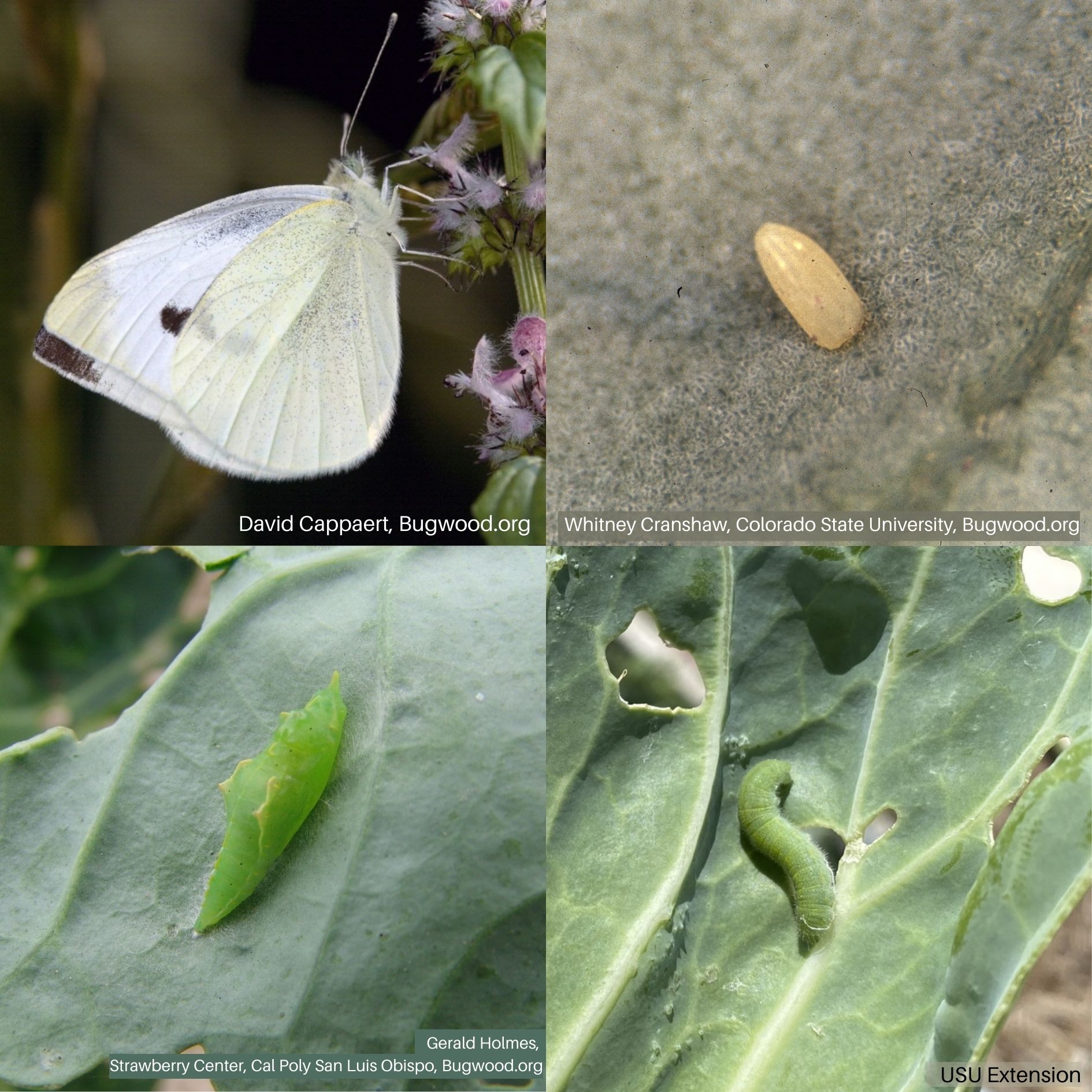Imported Cabbageworm
 Imported Cabbageworm Life Stages
Imported Cabbageworm Life Stages Imported Cabbageworm and Frass
Imported Cabbageworm and Frass Brussels sprout plant with cabbageworm feeding damage and frass.
Brussels sprout plant with cabbageworm feeding damage and frass. Severe Larvae Feeding Damage
Severe Larvae Feeding DamageHOSTS
- Cauliflower
- Brussels Sprouts
- Broccoli
- Cabbage
- Kale
- Collards
- Kohlrabi
- Leafy Greens
DESCRIPTION
Imported cabbageworm (Pieris rapae) larvae are green with a fuzzy/velvety appearance due to dense short hairs, and they are about 1.2 inches long. Adult butterflies are white with dark spots. Their wingspan is 2 inches.
BIOLOGY
Egg | Larva | Pupa | Adult
Imported cabbageworms overwinter as pupa (naked chrysalis) on plant foliage or debris. They are primarily active in the day. Larvae develop through 5 instars. They can have 3 to 4 generations a year in Utah.
SYMPTOMS
The larvae chew round holes in leaves, and may occasionally cause serious defoliation. As caterpillars mature, their feeding intensifies, and they often move into the developing heads. Larvae may also leave frass (fecal material) that can stain broccoli and cauliflower heads.
SCOUTING
- Scout weekly for imported cabbageworms starting when broccoli and cauliflower are at the button stage.
GENERAL MANAGEMENT
- Hand remove caterpillars.
- Plant cabbage early in the season in order to harvest before cabbageworm populations are at damaging levels.
- Use floating row covers to exclude cabbageworm butterflies from laying eggs on crops.
- Plant tolerant crop varieties, including ‘Mammoth’, ‘Red Rock’, ‘Chieftan Savoy’, and ‘Savoy Perfection Drumhead.'
- Clean growing site of plant debris after harvest.
- Manage weeds to remove overwintering sites for pupae.
INSECTICIDES
Insecticides containing Bacillus thuringiensis var. kurstaki (Bt) and spinosad are effective in suppressing imported cabbageworm.

